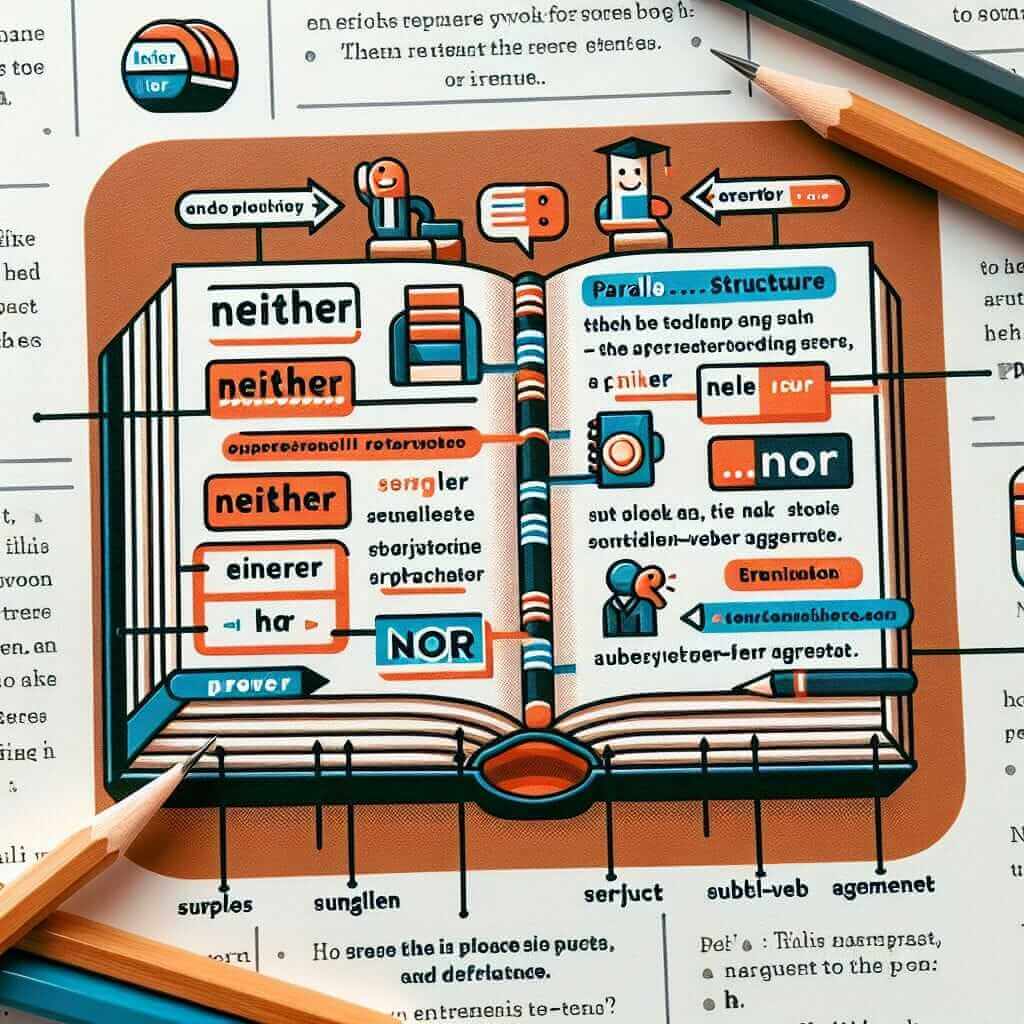“Neither… nor” is a powerful grammatical tool that can add sophistication and clarity to your writing and speaking, ultimately boosting your IELTS score. While it might seem simple, understanding its nuances and applications can significantly enhance your language skills.
Let’s examine a few examples demonstrating how “neither… nor” might appear across different sections of the IELTS exam:
Speaking: “I’m neither a morning person nor a night owl. I function best around midday.”
Writing Task 1: “The graph illustrates that neither car ownership nor public transportation usage showed significant growth.”
Writing Task 2: “Some argue that space exploration is a waste of resources. However, I believe neither scientific progress nor our inherent thirst for knowledge should be stifled.”
In each instance, “neither… nor” elegantly presents two options that are both untrue or nonexistent. Now, let’s delve deeper into its usage.
Understanding ‘Neither… Nor’
“Neither… nor” is a correlative conjunction. It connects two words, phrases, or clauses that share the same grammatical function and are being negated together. Essentially, it emphasizes that both elements are equally untrue or invalid.
Mastering the Grammar
Here’s the basic formula for using “neither… nor” effectively:
Neither + Noun/Phrase/Clause + Nor + Noun/Phrase/Clause
Important Considerations:
- Subject-Verb Agreement: When “neither… nor” links subjects, the verb agrees with the subject closer to it.
- Neither the students nor the teacher enjoys the new schedule.
- Neither the teacher nor the students enjoy the new schedule.
- Parallelism: For grammatical consistency and clarity, ensure the elements connected by “neither… nor” are parallel in structure.
- Incorrect: I neither enjoy swimming nor to run.
- Correct: I neither enjoy swimming nor running.
 Neither Nor Example
Neither Nor Example
Applying ‘Neither… Nor’ in IELTS
1. IELTS Speaking
“Neither… nor” can elevate your spoken responses, showcasing a wider vocabulary and better sentence structure:
-
Part 1 (Personal Preferences): “Do you prefer living in the city or the countryside?”
- “Neither, really. I find the noise of the city overwhelming, but I also dislike the isolation of the countryside.”
-
Part 3 (Abstract Discussion): “Do you think technology connects or isolates people?”
- “It’s neither inherently good nor bad. It depends entirely on how it’s used.”
2. IELTS Writing
In writing, “neither… nor” can add nuance and precision to your arguments and descriptions:
-
Task 1 (Describing Trends): “As the graph illustrates, neither the use of coal nor oil as primary energy sources declined significantly during this period.”
-
Task 2 (Expressing Opinions): “Some argue that happiness comes from material wealth. However, true contentment stems from neither possessions nor status, but rather from within.”
Achieving a Higher Score with ‘Neither… Nor’
To truly impress the IELTS examiner, consider these strategies:
-
Combine with other structures: “Not only… but also…” can be used in conjunction with “neither… nor” to create a powerful contrast.
- “Not only did the new policy fail to reduce unemployment, but it also led to neither economic growth nor social stability.”
-
Use in complex sentences: Embed “neither… nor” within a more complex sentence structure to showcase your command of grammar.
- “The study concluded that, contrary to popular belief, neither genetics nor upbringing alone determines a child’s personality, but rather a complex interplay of both.”
Common Errors and How to Avoid Them
-
Incorrect Subject-Verb Agreement: This is a common mistake. Remember the verb agrees with the noun or pronoun closer to it.
-
Lack of Parallelism: Maintaining parallel structure is crucial. Ensure the phrases connected by “neither… nor” are grammatically similar.
-
Overuse: While impactful, don’t overuse “neither… nor.” Use it strategically to emphasize key points.
Conclusion
Mastering “neither… nor” equips you with a valuable tool to express negation more effectively and add sophistication to your language. Remember to practice its various applications and be mindful of potential pitfalls. With dedication and consistent practice, you’ll wield this conjunction confidently, boosting your fluency and accuracy on the IELTS exam.


